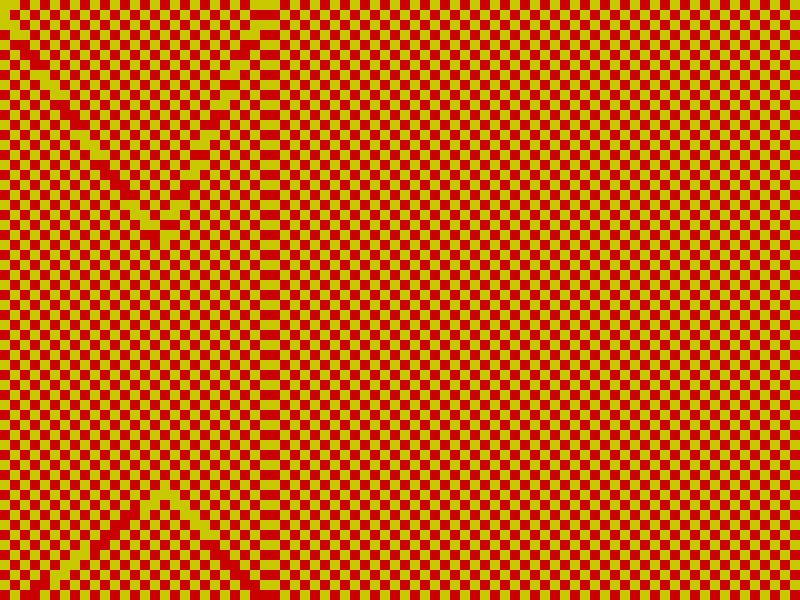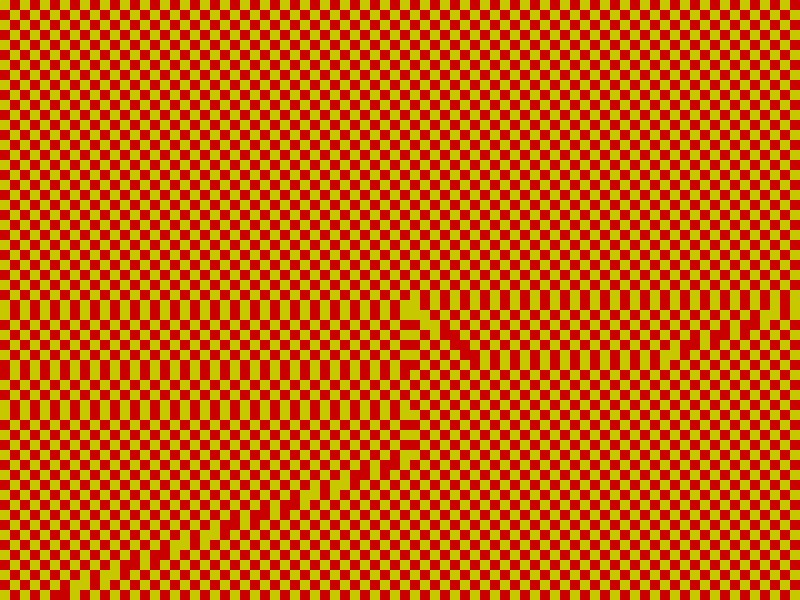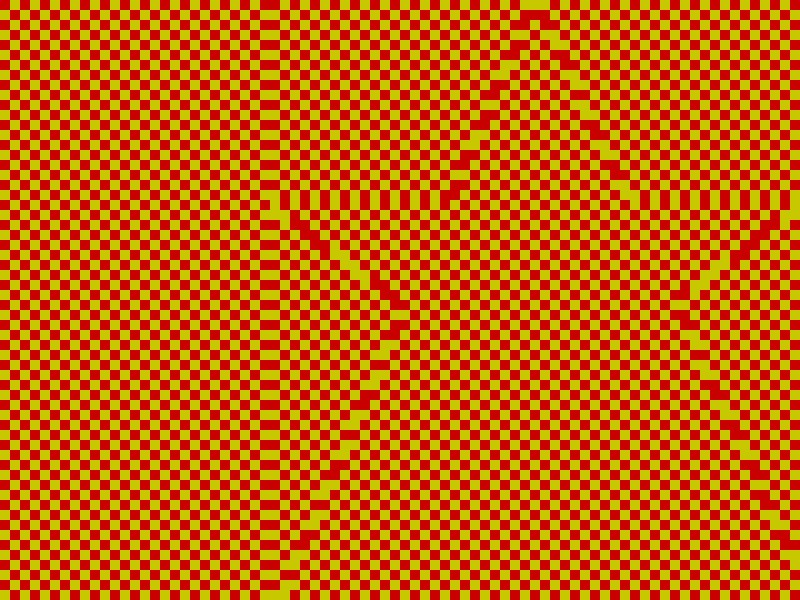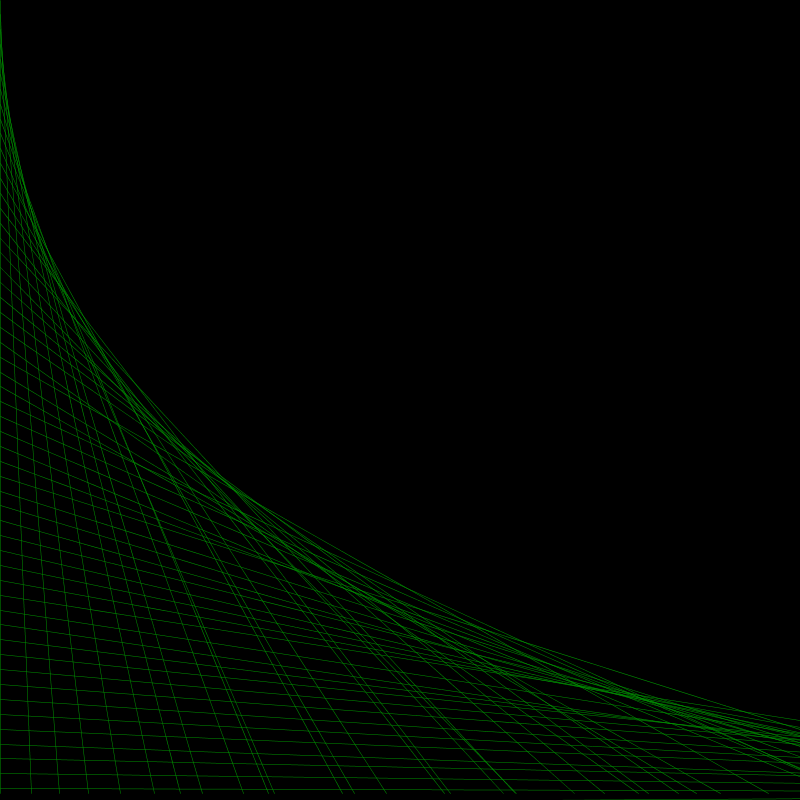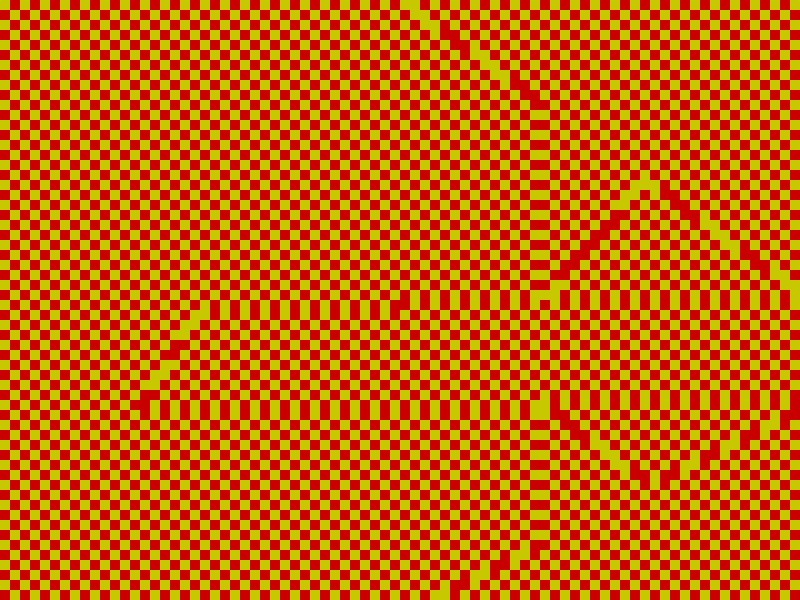
For this Studio prompt I was most inspired by Wolfram variation of a system: the cellular automata. The aspect I was most interested by or that I focused on in this studio prompt is the usage of finite states (on and off/0 and 1/true and false––all the same thing really). Despite the simplicity of such finite states, there is infinite potentiality when you give the computer a sort of “sentience” or self-awareness as well as, of course, stochasticity. Another departure point for the conceptualization of this piece would also be the idea of the birds-eye view. If you are high enough, the people you see in a top-down view of busy streets would probably resemble dots; in a way, the real people in their real lives going about their real days become abstracted, becoming simply dots moving around. Like ants, you might be able to make connections more easily between a human and non-human social system. Which is all to say, the view is truly ecological.
The code for this system is actually very simple, which makes it all the more satisfying to watch play out:
There are four functions that execute the same general action. Each starts at a different corner and goes a different direction. The one beginning at the top left moves right and then next row down; the top right moves down and then the next column left; the bottom right moves left then next row up; the bottom left moves up then next column right.Each one moves through one row or column at a time, drawing ultimately a grid of 10×10 rectangles. Through mod%20 (although a boolean would also work), I make it so it switches between a red and yellow fill, ultimately creating a checker pattern.
When it reaches the end of the row or column, it starts at the beginning of the next row or column and does the same thing. In addition, it triggers a boolean switch which reverses the color scenario (so if the first row is yellow red yellow red yellow, the next row is red yellow red yellow red…). Because each function is different in whether their switch is on or not, once they draw over each other, we see patterns take shape! Additionally, Each line also goes at a different pace, which also provides a different experience versus a unison pace. After a function goes through the whole canvas, it resets as well as goes at a different random speed. As I do not use the neighborhood system à la Wolfram, this allows for an always different viewing, as well as provides a form of autonomy to the machine (thus, an automata?).
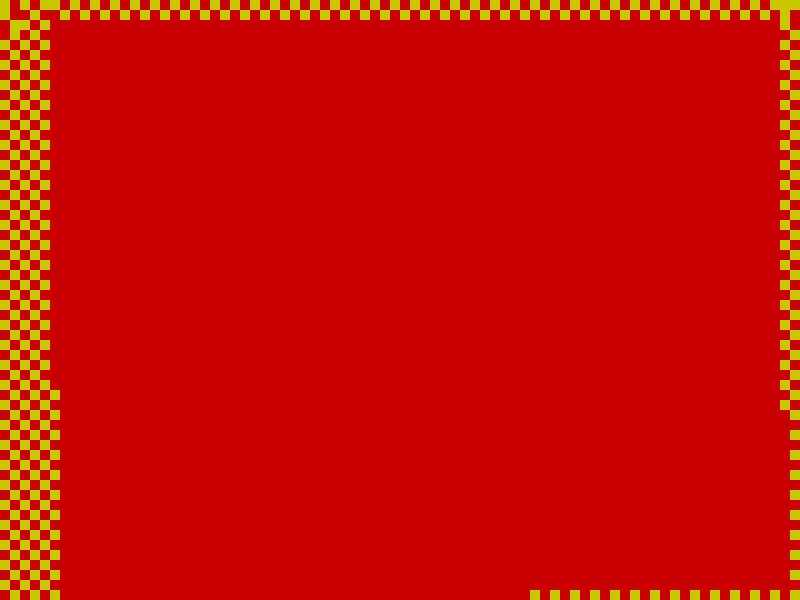

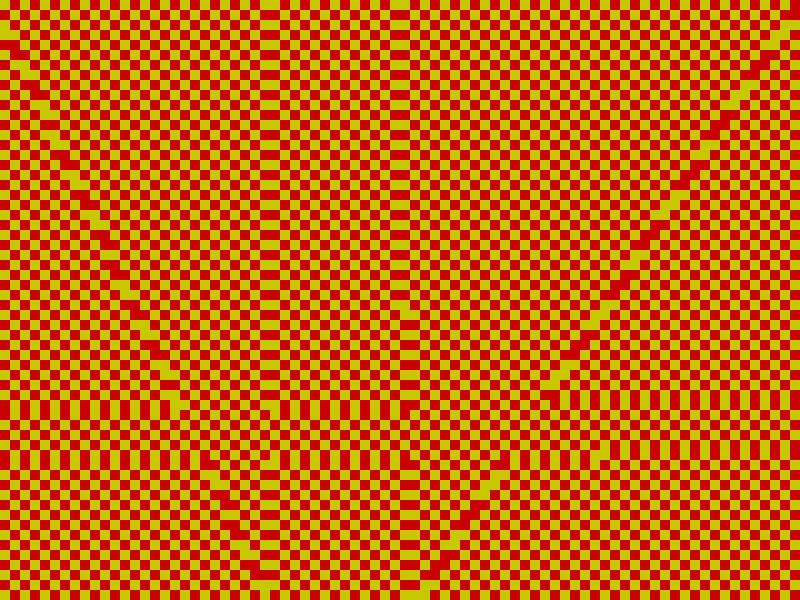
The pictures above and below provide an example of some of the formations that arises. The pictures, however, don’t really do justice to the experience, as each one personally didn’t seem right, always better informed by the moment before and after (if not multiple moments before and after). This perhaps exemplifies the fact that systems as not being at all object-oriented (capturability) and instead privileging a process (ecological). In fact, the motif of the ecological is crucial to system aesthetics as whole, as Jack Burnham writes of real time works of art, which is to say, not the art of the gallery. The ecological perspective asserts that we do not need to see the picture, but instead the bigger picture (one so big you can’t really see the whole thing, but still know it’s there). I would say that was what it was like to view this, as it always felt like it was headed to a big finish, but never getting there, and always anticipating it would go somewhere it doesn’t actually end at.
(For example, there are moments when we see a star-like formation or another recognizable pattern. In that case, we look more intently expecting it to finish it, as the motion creates the sense that we are zooming out from a tip of a star to see its entire body––only, we don’t get to see the full body [if there ever was one], by the time it nears, it also turns out to be creating something else.)
If I were to go forward, I would probably adopt the neighborhood and generation system perhaps. I thought about having every few hundred frames a random sorts of “explosions”, which starts at a random spot (i.e. square) and then shattering outwards, flipping each square to the reverse fill for a brief radius. Ultimately, I decided to keep it as is to for the sake of simplicity which I was most drawn to in this piece. Regardless, it would be interesting to see what these disruptions would contribute to the shape formations. Although the patterns did seem infinite in possibility, given the nature of the coding, there are of course general shapes that would be the most frequently made. It was definitely infinite or nigh infinite; that being said, the “explosions” would simply allow for more infinity.
